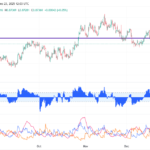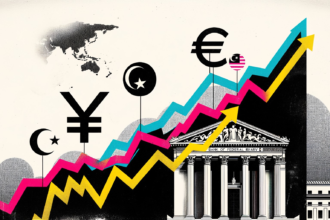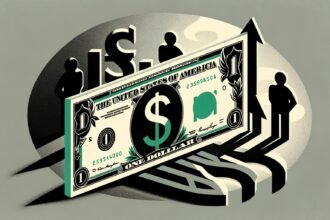By Rae Wee
SINGAPORE (Reuters) -The yen swung between losses and gains on Friday in volatile trade, reflecting investors’ skittishness after Tokyo was thought to have intervened to prop up the Japanese currency in the wake of a cooler-than-expected U.S. inflation report.
Moves in the yen against the dollar and other major currencies stole the spotlight on Friday, though in the broader market, Asian stocks were headed for a weekly gain on growing bets for a September rate cut from the Federal Reserve.
The dollar was last 0.23% higher at 159.24 yen, after rising more than 0.3% to an intraday high of 159.45 yen and falling 0.7% to a low of 157.75 yen in early trading on Friday.
Moves were similarly choppy in the other yen crosses, with the euro and sterling each last up 0.25% against the yen, both reversing earlier losses against the Japanese currency.
“It’s either one of two things – the market’s either jumping at shadows this morning waiting for a second round of intervention, and I think now that the (Bank of Japan) has committed again, there’s good reason for them to come back,” said Tony Sycamore, a market analyst at IG.
“The second thought is the market’s just really skittish.”
Speculation is rife that Japanese authorities had likely intervened in the currency market to shore up the yen on Thursday, after it surged nearly 3% against the dollar at one point after the release of the U.S. inflation figures.
The dollar ended Thursday’s session with a 1.7% loss against the yen, its largest daily decline since May.
Local media attributed the move to a round of official buying from Tokyo to prop up a currency that has languished at 38-year lows, though authorities as usual remained reticent on providing any hints of an intervention.
The Nikkei newspaper reported that the BOJ conducted rate checks with banks on the euro against the yen on Friday, citing several sources.
ON TRACK
MSCI’s broadest index of Asia-Pacific shares outside Japan fell 0.11%, tracking a negative lead from Wall Street, after investors rotated into smaller companies following the U.S. inflation print.
“The broad move was driven by rotation and switching across styles and factors,” said Chris Weston, head of research at Pepperstone. “It was the well-loved names that saw the selling and maybe this was partly technical given just how extended these plays are.”
The move spilled over to some Asian bourses on Friday, with Japan’s Nikkei falling 2%, similarly dragged down by tech stocks. However, Hong Kong’s Hang Seng Index rose 2%.
S&P 500 futures were flat, while Nasdaq futures fell 0.1% and EUROSTOXX 50 futures eased 0.06%.
Still, Asia shares remained on track for a weekly gain of about 1.5%, helped by growing bets of imminent U.S. rate cuts.
Those expectations were reinforced after Thursday’s U.S. consumer price figures and as Fed officials showed increasing confidence that inflation was coming to heel.
Market pricing now shows an over 90% chance of a Fed easing cycle beginning in September, as compared to just over a 50% chance a month ago, according to the CME FedWatch tool.
“While the timing of eventual Fed rate cuts will depend on incoming data, this report, together with some softening in the labor market, has further tilted the balance of evidence towards an earlier start time,” said David Doyle, head of economics at Macquarie.
In China, data on Friday showed exports rose 8.6% in June from a year earlier, though imports unexpectedly shrank 2.3%.
Markets hardly reacted to the figures, with Chinese blue chips last down 0.2%.
The onshore yuan dipped slightly to 7.2640 per dollar.
In other currencies, sterling eased 0.04% to $1.29075, though hovered near a roughly one-year high hit on Thursday, as comments from Bank of England policymakers and better-than-forecast GDP data led traders to reduce bets on an August rate cut in Britain.
The euro gained 0.03% to $1.0869, while the U.S. dollar was on the defensive and languished near a one-month low against a basket of currencies from the previous session.
Oil prices meanwhile rose as signs of strong summer demand and easing inflationary pressures in the United States bolstered investor confidence. [O/R]
Brent futures ticked up 0.25% to $85.62 per barrel, while U.S. West Texas Intermediate (WTI) crude gained 0.39% to $82.94 a barrel.
Gold edged 0.26% lower to $2,408.69 an ounce. [GOL/]
(Editing by Christian Schmollinger)





















